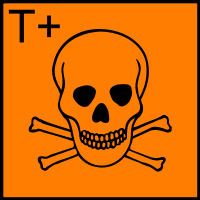|
Linear Formula
|
Na2SeO3
|
|
Product Line
|
BioReagent
|
|
Purity
|
≥98%
|
|
Suitability
|
suitable for cell culture
|
|
Apperance
|
powder
|
|
Melting Point
|
>350 °C(lit.)
|
|
GHS Pictograms
|

|
|
GHS Pictograms
|

|
|
GHS Signal Word
|
Danger
|
|
GHS Hazard statements
|
H300-H317-H331-H411
|
|
European Hazard Symbols
|
 Highly toxic (T+) Highly toxic (T+)
|
|
European Hazard Symbols
|
 Nature polluting (N) Nature polluting (N)
|
|
MSDS Link
|
Download
|
|
Personal Protective Equipment
|
Eyeshields, Faceshields, full-face particle respirator type N100 (US), Gloves, respirator cartridge type N100 (US), type P1 (EN143) respirator filter, type P3 (EN 143) respirator cartridges
|
|
GHS Precautionary statements
|
P261-P264-P273-P280-P301 + P310-P311
|
|
RID/ADR
|
UN 2630 6.1/PG 1
|
|
Risk Statements
|
23-28-31-43-51/53
|
|
Safety Statements
|
28-36/37-45-61
|
|
Supplemental Hazard Statements
|
Contact with acids liberates toxic gas.
|
|
Hazard Class
|
6.1
|
|
UN Number
|
2630
|
|
Packing Group
|
1
|
|
German water hazard class
|
2
|